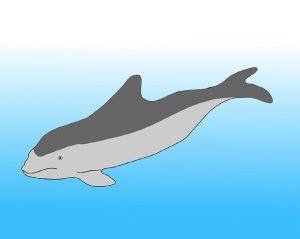
harbourt porpoise sees sound pictures
Porpoises have a special region in their head (called the “melon”) which contains a special type of fat. Because the speed of sound in that
fatty tissue is different than that of the rest of the body, this fat is used as a “sound lens” to collect sonar signals from a distance, which are then transmitted by nerves to the brain – producing a small TV screen “sound pictures.” Because the composition of the fat varies in different parts of the melon, this produces a “doublet” lens which is more accurate. Surely, the porpoise did not make this equipment.


Leave a Reply